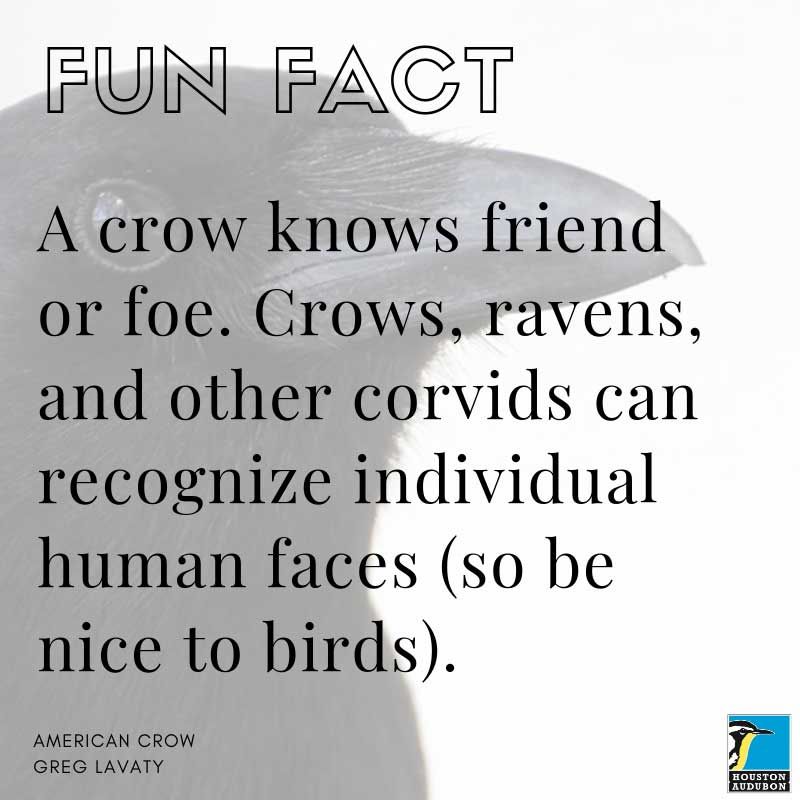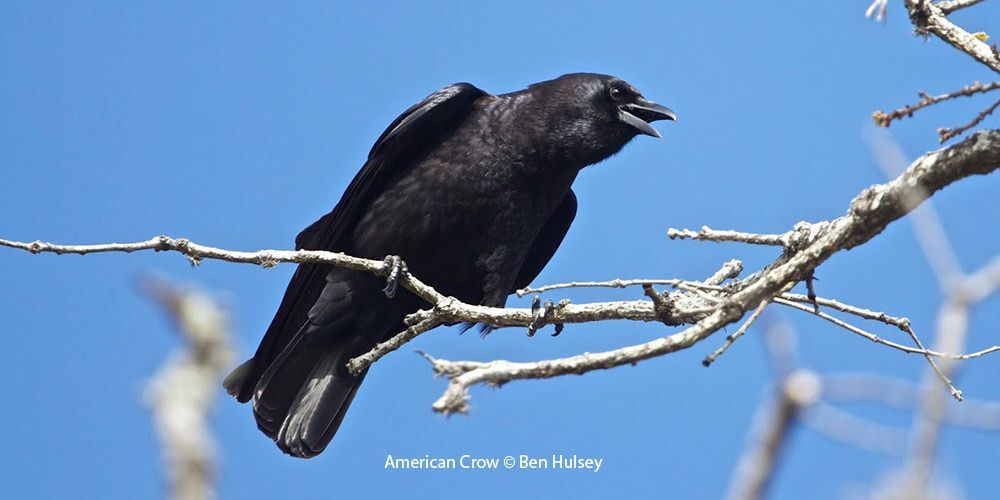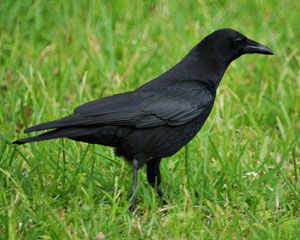
© Joseph Kennedy
American Crow
Corvus brachyrhynchos
Family: (Corvidae) Crows and Jays
Preferred Habitat: Almost anywhere, including urban settings, woodlands and open country
Seasonal Occurrence: Abundant throughout the year.
Profile by Richard Gibbons: Their large size and all black body and bill make crows easy to spot. You can find them nearly anywhere: in the quiet of a Houston Audubon sanctuary, or in forests, beaches, farms, parking lots or garbage dumps. They are omnivorous, opportunistic feeders with a diet including, but not limited to, seeds, fruit, insects, small mammals, carrion, and garbage.
Crows are sometimes used in books or movies to create an ominous setting. Their loud, hoarse caw, dark body, and tendency to eat roadkill (which is actually only a very small part of their diet) make it easy to see why. They are very aggressive and will work together to mob predators.
While the American Crow has classically been seen as intimidating, it is also a very interesting species. Their conspicuousness in everyday life and air of intelligence has made them ripe for scientific study. Research and observation have shown that they can sometimes make and use tools, will use distraction to steal food from other animals, and can recognize faces. They are very social animals and will form large communal roosts in the winter with thousands of crows. In many groups the young will help their parents raise the new chicks for a few years. Whether you find them frightful or fascinating, the American Crow is a bird that demands attention.
Profile by Grace Yaros: In celebration of Black Birders Week (May 2024), this week we are highlighting the fascinating world of corvids! American Crows are a familiar sight across most of the United States and Canada. They may be found in almost any habitat, and eat a wide variety of different foods, including carrion, nuts, berries, insects, rodents, fish, and even eggs and young birds. During the nineteenth and early twentieth centuries, American Crows were widely regarded as agricultural pests. Today, they thrive in cities, parks, and other human-altered landscapes. They are very similar in appearance to Fish Crows, which are found on the Atlantic Coast and southeastern United States. The easiest and most reliable way to distinguish them is by their voice: Fish Crows give nasal “cah” or “uh-uh” calls, while American Crows give a classic “caw!” call (but be aware that young American Crows give nasal begging calls that may sound similar to a Fish Crow).
Social and intelligent, crows exhibit a variety of fascinating behaviors; they have been observed playing with objects such as twigs and leaves, and form large flocks at communal roosts, sometimes numbering in the thousands! They are also famous for holding “funerals”, during which flocks will gather around a dead crow, as though in mourning. It’s thought that these gatherings are actually investigations, and opportunities for flocks to identify potential threats in the area. Their sociality, problem-solving skills, and incredible memory are part of why crows are so successful, especially in ever-changing urban and suburban landscapes.
-
Cornell Lab of Ornithology
-
Bird Guide
-
Bird Library
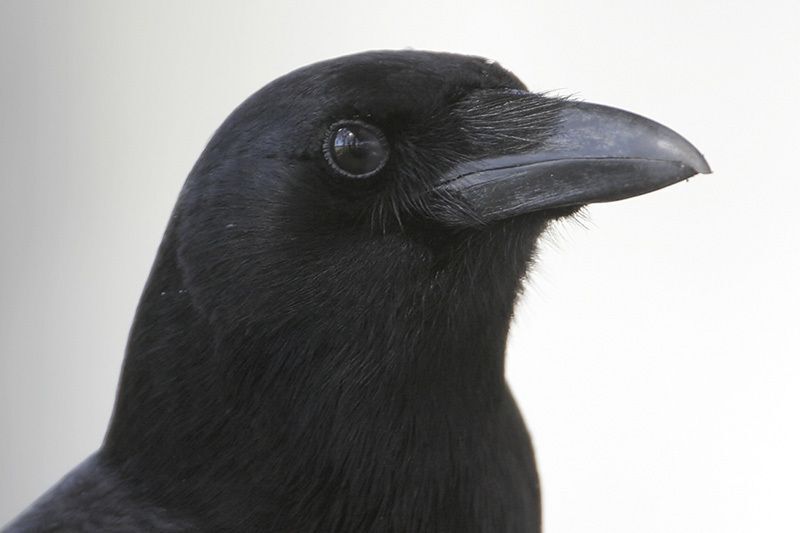
© Greg Lavaty, www.texastargetbirds.com
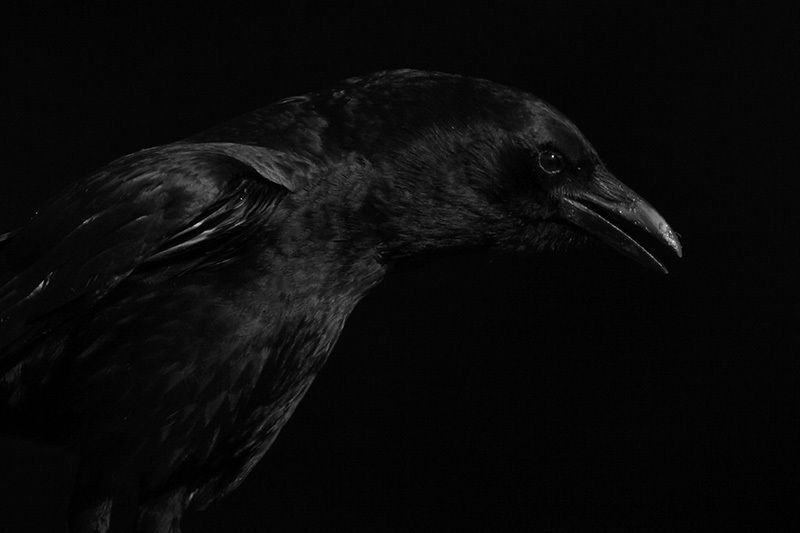
© Greg Lavaty, www.texastargetbirds.com
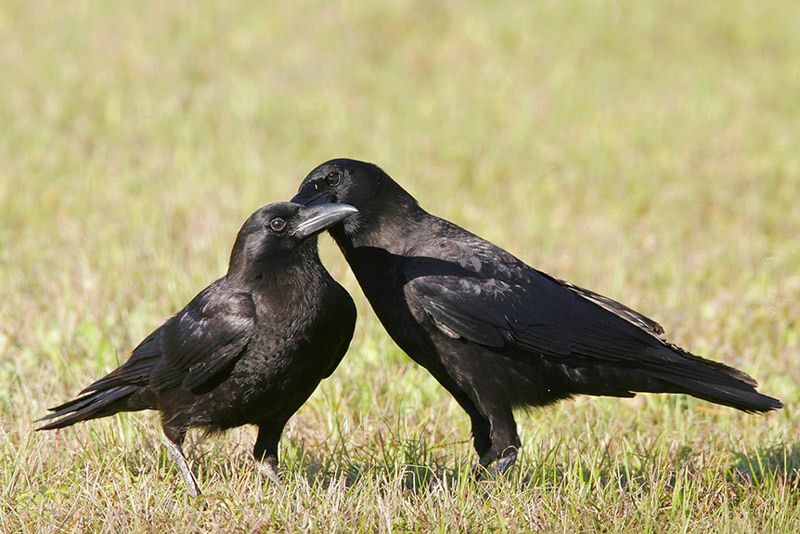
© Greg Lavaty, www.texastargetbirds.com
